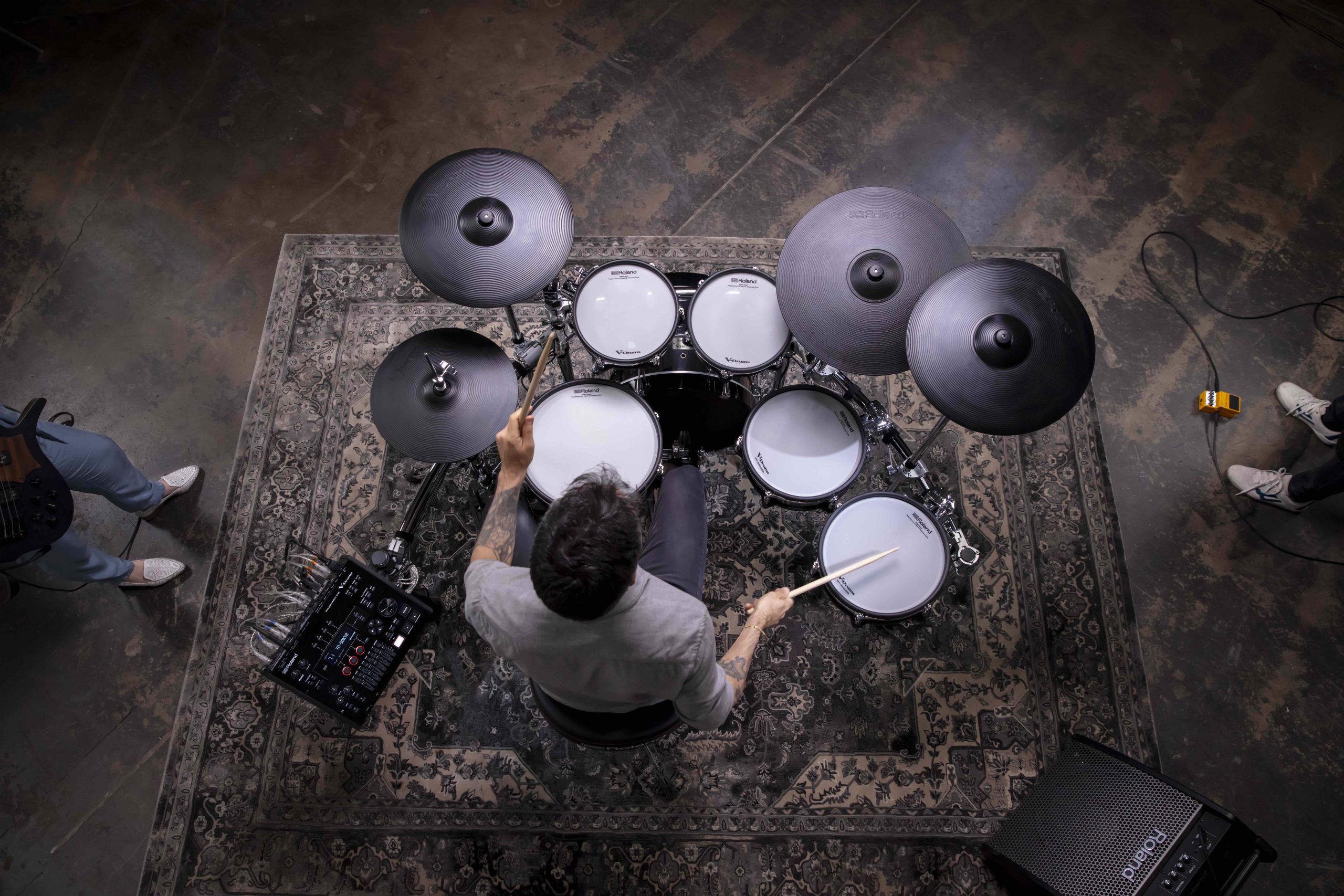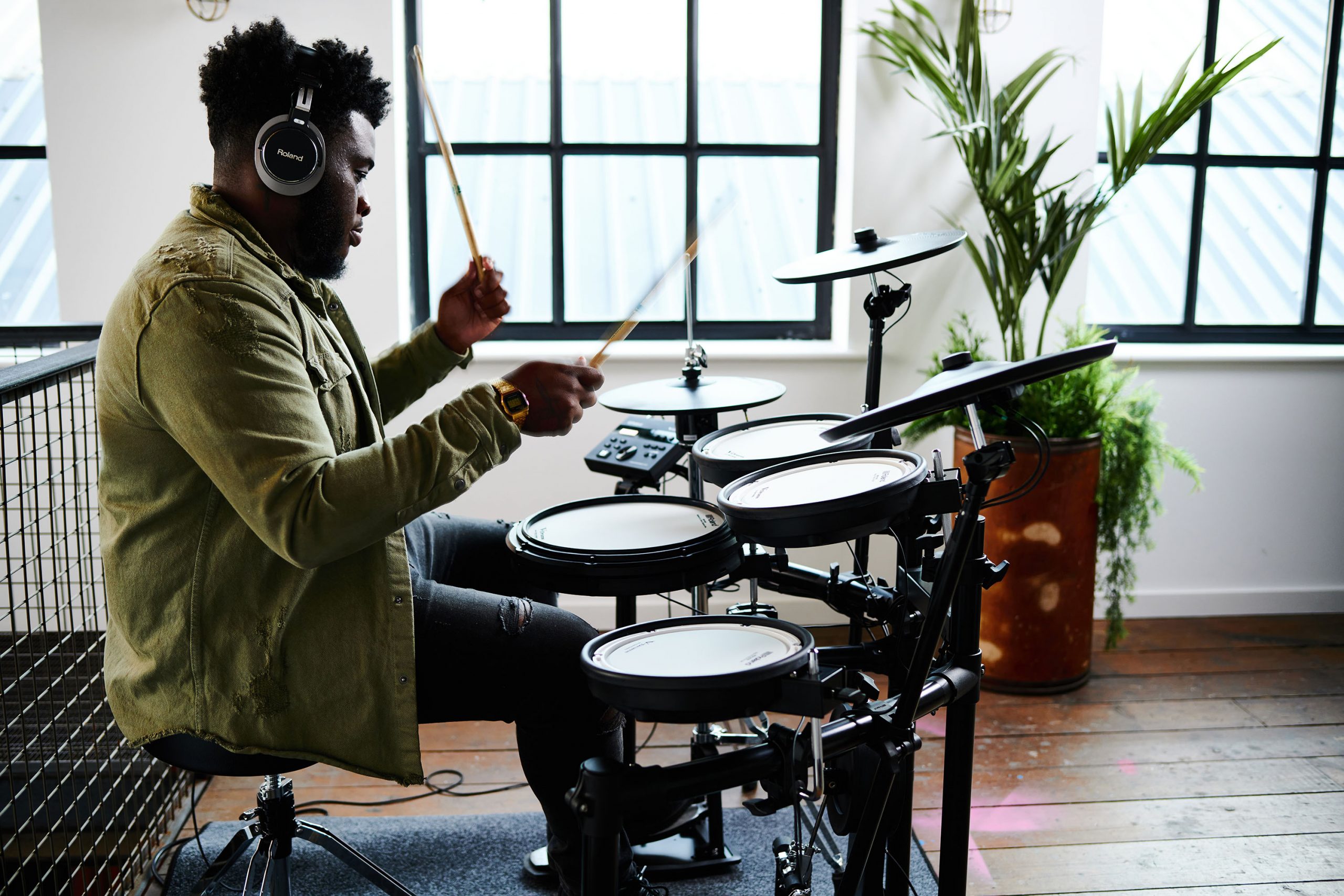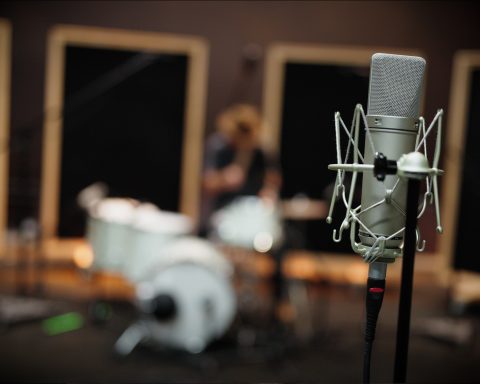Congratulations on taking the dive into drumming. Whether drums are your first instrument or your fifth, they will vastly change your relationship with rhythm. Like anything, it doesn’t take much to get going, but once it grabs you, hold on. You’re headed on a wonderful rhythmic ride.
Lean On a Teacher
The best thing to do first is find a place to learn. There are plenty of free learning resources on YouTube. Many of those YouTube channels, like Drumeo, have more paid lessons on their own websites. This is helpful for disciplined self-learners. Integrating tech tools like learning software Melodics can help too. Though, it’s a smart choice for drummers to also consider in-person instruction.
Choosing an in-person instructor can be tough. Make it easier by keeping the following few things in mind. Do you look forward to the lessons? Does the instructor listen to you and encourage you along the way? If you can answer yes to those questions, then you’ve found the right educator. Remember, it’s okay to shop around until you find the teacher you connect with best.
A good educator will help you adjust your physical technique. Drumming is a sport. Good technique helps us access the most power without any risk of injury. Sitting the wrong way or holding the stick incorrectly can cause serious damage. Get it right by working with a teacher from the start.

"Remember, it’s okay to shop around until you find the teacher you connect with best."
Let’s Talk Sticks
There are so many options when choosing drumsticks. In the beginning, make it easy and start with a middle-of-the-road 5A model. If the sticks break easily, get something thicker. If you get tears in your hands beyond calluses, seek a thinner stick. For drummers under eight, consider youth-sized sticks. This ensures the budding drummer doesn’t injure themselves from too large a stick.
As you get further down your drumming path, narrow in on a more personalized stick model. Find out what your favorite drummer plays. Consider what other drummers in your genre play. Note stick length, diameter, taper, and tip. All these little differences add up to make a big change in stick performance and feel.
With a pair of sticks, you can start drumming. All you need is a pillow! Many players, including P-Funk and Santana drummer Dennis Chambers, famously practice on pillows. When you’re ready for something a little more conventional, grab a practice pad.
"Practice for ten minutes a day. In a month, that totals five hours. It adds up quick."
Portable Practice Tools
Practice pads are a great way to get your hands moving and grooving. They’re generally a foot or less in diameter and feature a rubber pad affixed to a wood base. Pads have the rebound of acoustic drums, so they feel great to play. They also have a low volume over traditional acoustic drums. Practice pads are perfect for apartment living or practicing on the go. Use a practice pad to work on drumming patterns and hand technique. With an economic price point, they’re a perfect first investment before moving on to a drum kit.

Acoustic Versus Electronic Drum Sets
Playing drums is a blast, but how do you know what type of drum set is right for you? Let’s explore the differences between acoustic and electronic drum sets.
Acoustic drum sets are a great option for those who can be loud. They also come in different sizes, so you can accommodate shorter and taller drummers. When you’re starting out, seek a beginner drum set package. Beginner sets often come complete with all the stands and cymbals. These sets are generally sized well for any new drummers, making them great for older children and adults.
One complaint about acoustic drums is that they’re too loud. Drum mutes are a great investment for those who want an acoustic drum set, but who have limited hours to rock out. Drum mutes are rubber pads that sit atop each drum and cymbal. They dampen noise, but they also rid the kit of natural drum sounds. Consider electronic drums if you need a low-volume drum set with the inspiration of hearing live acoustic drum set sounds.
"Most drummers take years to hone their craft, but they get to enjoy every second along the way."
Plug In, Have Fun
Electronic drums are the perfect instrument for apartment living and studio performance. These drums feature a headphone output, so you can play very quietly. Meanwhile, you get the full sound of a drum set right in your headphones. Electronic drums also feature several different drum set sounds. Enjoy the classic sounds of the ’60s and ’70s, and experiment with funky futuristic tones. This ensures you’re inspired every time you sit at the kit.
With added digital functionality, electronic drum sets offer great integrated practice tools too. Many Roland drum sets feature onboard metronomes. This allows you to practice beats and rhythmic patterns at a set speed to conquer any exercise fast. Often, electronic drums also feature ways to play along with songs right through the set. This keeps all your practice tools in one place.
Beyond being a great low-volume option, electronic drums work well in the recording studio. They sound great and don’t require the tuning or finesse needed with acoustic drums. This makes recording a great drum sound easy. Connect your electronic kit with any recording software. Instantly make drum covers, record music with your band, or capture practice performances. Whether you need a quiet practice tool or a recording workhorse, electronic drums will serve you well at any part of your drumming journey.
Practice, Practice, Practice
One thing you need to get started on drums is time to practice. When practicing, divide your time into three parts. Focus on hand technique exercises. Then, spend time playing along to your favorite records or soloing. Finally, have some fun with drums, whatever that looks like to you.
"If you practice at too fast a speed and make a mistake, it's harder to correct. Play every note right at a slower tempo, and then speed it up until it's blazing fast."
The biggest suggestion I give new drummers is to slow down when learning challengng new concepts. If you practice at too fast a speed and make a mistake, it’s harder to correct. Play every note right at a slower tempo, and then speed it up until it’s blazing fast. You don’t need a huge chunk of time to get started learning drums either. Practice for ten minutes a day. In a month, that totals five hours. It adds up quickly.
All you need to start drumming is a pair of sticks. After you get a practice pad, move up to a drum set. Ensure you carve out time to practice. Most drummers exercise patience, taking years to hone their craft, but they get to enjoy every second along the way.







